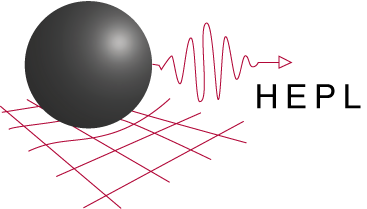News & Events
HEPL-KIPAC Seminar
Wednesday, June 24, 2009
Sasha Buchman
Co-Investigator, Gravity Probe B
Stanford
Effects of Patch Potentials on the GP-B Performance:
Results and Lessons Learned
View Seminar Presentation Slides
Abstract:The Relativity Mission, Gravity Probe B (GP-B) is one of the most complex space missions to date and the first controlled experiment in which a General Relativistic effect is the main feature of the data. All the principal disturbance to the predicted gyroscope performance were found to be caused by electrostatic patches with a value of about 50 mV to 100 mV; present on both the gyroscopes and their housings. We discuss all these effects, including:
a) dissipative torques of between 2 pW and 12 pW resulting in spin-down rates of between 0.3 µHz/hr and 1.3 µHz/hr and in polhode damping periods of 30 days to 70 days.
b) non-dissipative torques resulting in misalignment precession rates of about 1,000 marcs/yr, and resonance torques causing precessions of up to 200 marcs/day during the hours-long periods when roll and polhode rates are commensurate.
The patch effects also affected the GP-B operations causing:
a) charge measurement biases of up to about 40 mV
b) variable drag-free main axis bias of up to 2x10-8 m/s2
c) time-variable read-out effects
d) data analysis complexity
We discuss the “image forces” a class of electrostatic forces presently not included in the data analysis models. The total impact on the GP-B accuracy of the patch-effects is estimated at between 1 marcs/yr and 5 marcs/yr; not including the patch-effect “image forces”, read-out effects, and data acquisition and analysis errors. We also discuss lessons learned from the GP-B experience with the patch effects and their impact on the development of technology for the Laser Interferometer Space Antenna (LISA) and the Space Test of the Equivalence Principle (STEP).
Bio: Sasha Buchman graduated with a PhD in physics from Harvard University. As a Research Associate at MIT he worked on spin polarized hydrogen and deuterium in both gas and surface films. After joining the GP-B group he led the development of the gyroscopes and led the hardware development and overall program. His present interests include the science and technology of the Laser Interferometer Space Antenna (LISA) and the program of fundamental science on small satellites (STAR).
Time: 4:00pm – 5:30pm
Location: Physics and Astrophysics Conference Room 102/103
Light refreshments available 4:15pm; Presentation begiins 4:15pm.
Open to All


